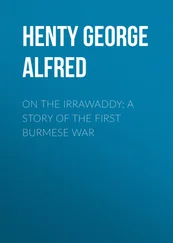Babur - The Bābur-nāma
Здесь есть возможность читать онлайн «Babur - The Bābur-nāma» — ознакомительный отрывок электронной книги совершенно бесплатно, а после прочтения отрывка купить полную версию. В некоторых случаях можно слушать аудио, скачать через торрент в формате fb2 и присутствует краткое содержание. Жанр: foreign_antique, foreign_prose, на английском языке. Описание произведения, (предисловие) а так же отзывы посетителей доступны на портале библиотеки ЛибКат.
- Название:The Bābur-nāma
- Автор:
- Жанр:
- Год:неизвестен
- ISBN:нет данных
- Рейтинг книги:4 / 5. Голосов: 1
-
Избранное:Добавить в избранное
- Отзывы:
-
Ваша оценка:
- 80
- 1
- 2
- 3
- 4
- 5
The Bābur-nāma: краткое содержание, описание и аннотация
Предлагаем к чтению аннотацию, описание, краткое содержание или предисловие (зависит от того, что написал сам автор книги «The Bābur-nāma»). Если вы не нашли необходимую информацию о книге — напишите в комментариях, мы постараемся отыскать её.
The Bābur-nāma — читать онлайн ознакомительный отрывок
Ниже представлен текст книги, разбитый по страницам. Система сохранения места последней прочитанной страницы, позволяет с удобством читать онлайн бесплатно книгу «The Bābur-nāma», без необходимости каждый раз заново искать на чём Вы остановились. Поставьте закладку, и сможете в любой момент перейти на страницу, на которой закончили чтение.
Интервал:
Закладка:
Few who are at home in Baburiana but will take Timur as Babur’s great exemplar not only as a soldier but as a chronicler. Timur cannot have seemed remote from that group of people so well-informed about him and his civilian doings; his Shahrukhi grandchildren in Samarkand had carried on his author-tradition; the 74 years of Yunas Khan’s life had bridged the gap between Timur’s death in 807-1405 and Babur’s birth in 888-1483. To Babur Timur will have been exemplary through his grandson Aulugh Beg who has two productions to his credit, the Char-ulus (Four Hordes) and the Kurkani Astronomical Tables. His sons, again, Babur ( qalandar ) and Ibrahim carried on the family torch of letters, the first in verse and the second by initiating and fostering Yazdi’s labours on the Zafar-nama . Wide-radiating and potent influence for the Arts of Peace came forth from Herat during the reign of that Sultan Husain Mirza whose Court Babur describes in one of the best supplements to his autobiography. Husain was a Timurid of the elder branch of Bai-qara, an author himself but far more effective as a Macænas; one man of the shining galaxy of competence that gave him fame, set pertinent example for Babur the author, namely, the Andijani of noble Chaghatai family, ’Ali-sher Nawa’i who, in classic Turki verse was the master Babur was to become in its prose. That the standard of effort was high in Herat is clear from Babur’s dictum (p. 233) that whatever work a man took up, he aspired to bring it to perfection. Elphinstone varies the same theme to the tune of equality of excellence apart from social status, writing to Erskine (August, 1826), that “it gives a high notion of the time to find” (in Babur’s account of Husain’s Court) “artists, musicians and others, described along with the learned and great of the Age”.
My meagre summary of Babur’s exemplars would be noticeably incomplete if it omitted mention of two of his life-long helpers in the gentler Arts, his love of Nature and his admiration for great architectural creations. The first makes joyous accompaniment throughout his book; the second is specially called forth by Timur’s ennoblement of Samarkand. Timur had built magnificently and laid out stately gardens; Babur made many a fruitful pleasaunce and gladdened many an arid halting-place; he built a little, but had small chance to test his capacity for building greatly; never rich, he was poor in Kabul and several times destitute in his home-lands. But his sword won what gave wealth to his Indian Dynasty, and he passed on to it the builder’s unused dower, so that Samarkand was surpassed in Hindustan and the spiritual conception Timur’s creations embodied took perfect form at Sikandra where Akbar lies entombed.
Chapter II.
PROBLEMS OF THE MUTILATED BABUR-NAMA
Losses from the text of Babur’s book are the more disastrous because it truly embodies his career. For it has the rare distinction of being contemporary with the events it describes, is boyish in his boyhood, grows with his growth, matures as he matured. Undulled by retrospect, it is a fresh and spontaneous recital of things just seen, heard or done. It has the further rare distinction of shewing a boy who, setting a future task before him – in his case the revival of Timurid power, – began to chronicle his adventure in the book which through some 37 years was his twinned comrade, which by its special distinctions has attracted readers for nearly a half-millennium, still attracts and still is a thing apart from autobiographies which look back to recall dead years.
Much circumstance makes for the opinion that Babur left his life-record complete, perhaps repaired in places and recently supplemented, but continuous, orderly and lucid; this it is not now, nor has been since it was translated into Persian in 1589, for it is fissured by lacunæ , has neither Preface nor Epilogue, 2 2 The suggestion, implied by my use of this word, that Babur may have definitely closed his autobiography (as Timur did under other circumstances) is due to the existence of a compelling cause viz. that he would be expectant of death as the price of Humayun’s restored life (p. 701).
opens in an oddly abrupt and incongruous fashion, and consists of a series of fragments so disconnected as to demand considerable preliminary explanation. Needless to say, its dwindled condition notwithstanding, it has place amongst great autobiographies, still revealing its author playing a man’s part in a drama of much historic and personal interest. Its revelation is however now like a portrait out of drawing, because it has not kept the record of certain years of his manhood in which he took momentous decisions,(1) those of 1511-12 [918] in which he accepted reinforcement – at a great price – from Isma‘il the Shi‘a Shah of Persia, and in which, if my reading be correct, he first (1512) broke the Law against the use of wine, 3 3 Cf. p. 83 and n. and Add. Note, P. 83 for further emendation of a contradiction effected by some malign influence in the note (p. 83) between parts of that note, and between it and Babur’s account of his not-drinking in Herat.
(2) those of 1519-1525 [926-932], in which his literary occupations with orthodox Law ( see Mubin ) associated with cognate matters of 932 AH. indicate that his return to obedience had begun, in which too was taken the decision that worked out for his fifth expedition across the Indus with its sequel of the conquest of Hind. – The loss of matter so weighty cannot but destroy the balance of his record and falsify the drawing of his portrait.
a. Problem of Titles.
As nothing survives to decide what was Babur’s chosen title for his autobiography, a modern assignment of names to distinguish it from its various descendants is desirable, particularly so since the revival of interest in it towards which the Facsimile of its Haidarabad Codex has contributed. 4 4 Teufel held its title to be waqi‘ (this I adopted in 1908), but it has no definite support and in numerous instances of its occurrence to describe the acts or doings of Babur, it could be read as a common noun.
Babur-nama (History of Babur) is a well-warranted name by which to distinguish the original Turki text, because long associated with this and rarely if ever applied to its Persian translation. 5 5 It stands on the reverse of the frontal page of the Haidarabad Codex; it is Timur-pulad’s name for the Codex he purchased in Bukhara, and it is thence brought on by Kehr (with Ilminski), and Klaproth (Cap. III); it is used by Khwafi Khan (d. cir. 1732), etc.
It is not comprehensive because not covering supplementary matter of biography and description but it has use for modern readers of classing Babur’s with other Timuriya and Timurid histories such as the Zafar-Humayun-Akbar-namas .
Waqi‘āt-i-baburi (Babur’s Acts), being descriptive of the book and in common use for naming both the Turki and Persian texts, might usefully be reserved as a title for the latter alone.
Amongst European versions of the book Memoirs of Baber is Erskine’s peculium for the Leyden and Erskine Perso-English translation — Mémoires de Baber is Pavet de Courteille’s title for his French version of the Bukhara [Persified-Turki] compilation — Babur-nama in English links the translation these volumes contain with its purely-Turki source.
b. Problems of the Constituents of the Books.
Intact or mutilated, Babur’s material falls naturally into three territorial divisions, those of the lands of his successive rule, Farghana (with Samarkand), Kabul and Hindustan. With these are distinct sub-sections of description of places and of obituaries of kinsmen.
Читать дальшеИнтервал:
Закладка:
Похожие книги на «The Bābur-nāma»
Представляем Вашему вниманию похожие книги на «The Bābur-nāma» списком для выбора. Мы отобрали схожую по названию и смыслу литературу в надежде предоставить читателям больше вариантов отыскать новые, интересные, ещё непрочитанные произведения.
Обсуждение, отзывы о книге «The Bābur-nāma» и просто собственные мнения читателей. Оставьте ваши комментарии, напишите, что Вы думаете о произведении, его смысле или главных героях. Укажите что конкретно понравилось, а что нет, и почему Вы так считаете.











